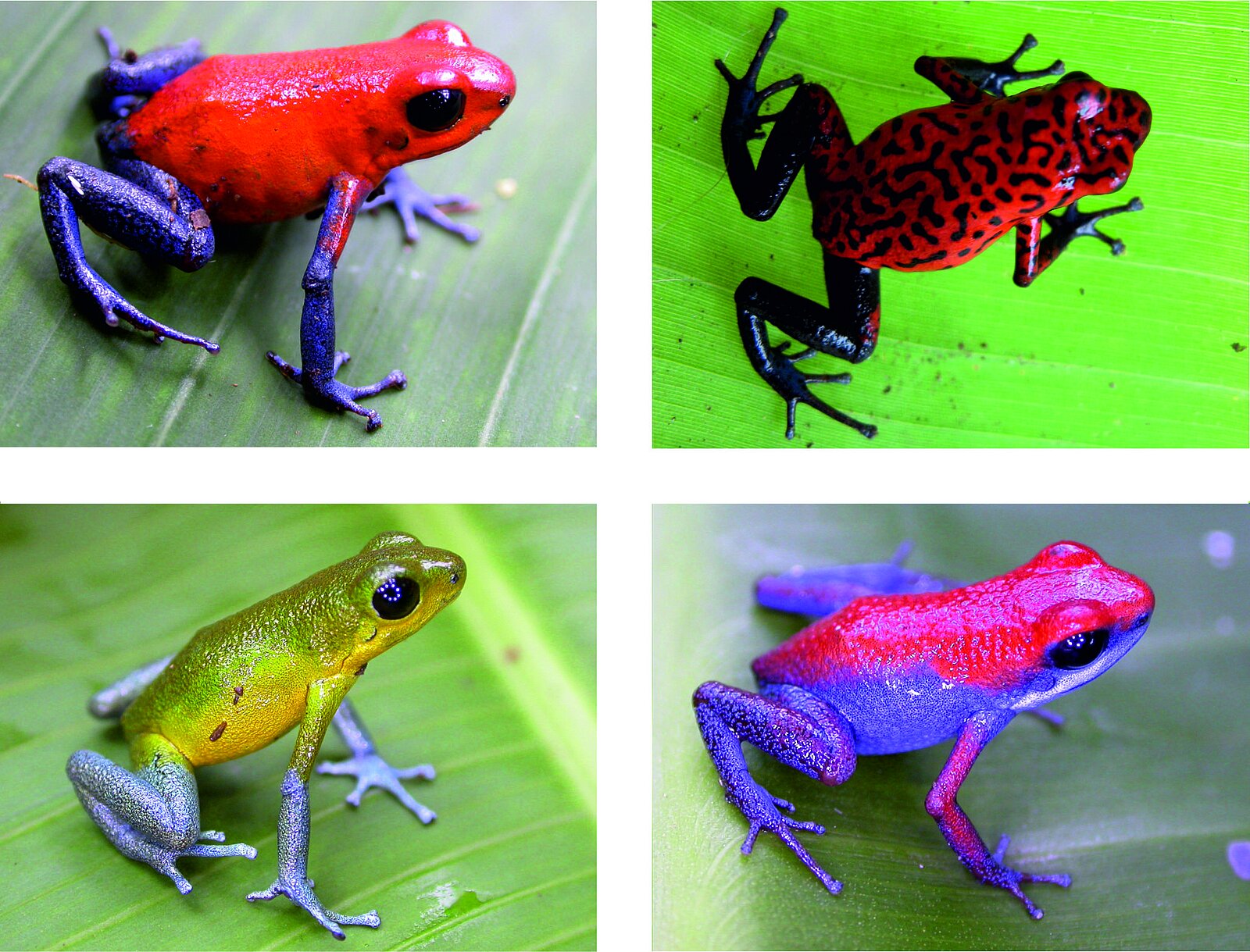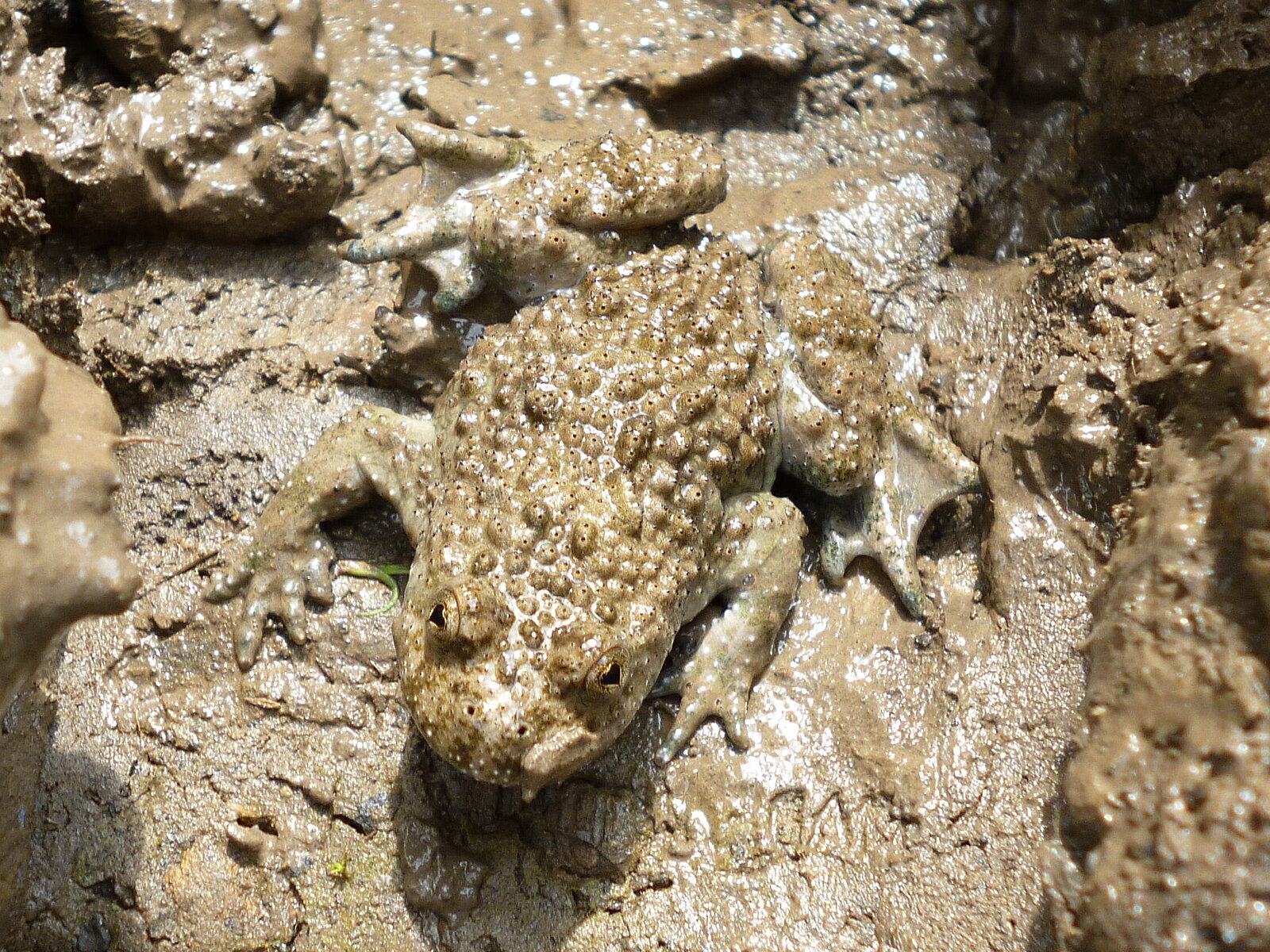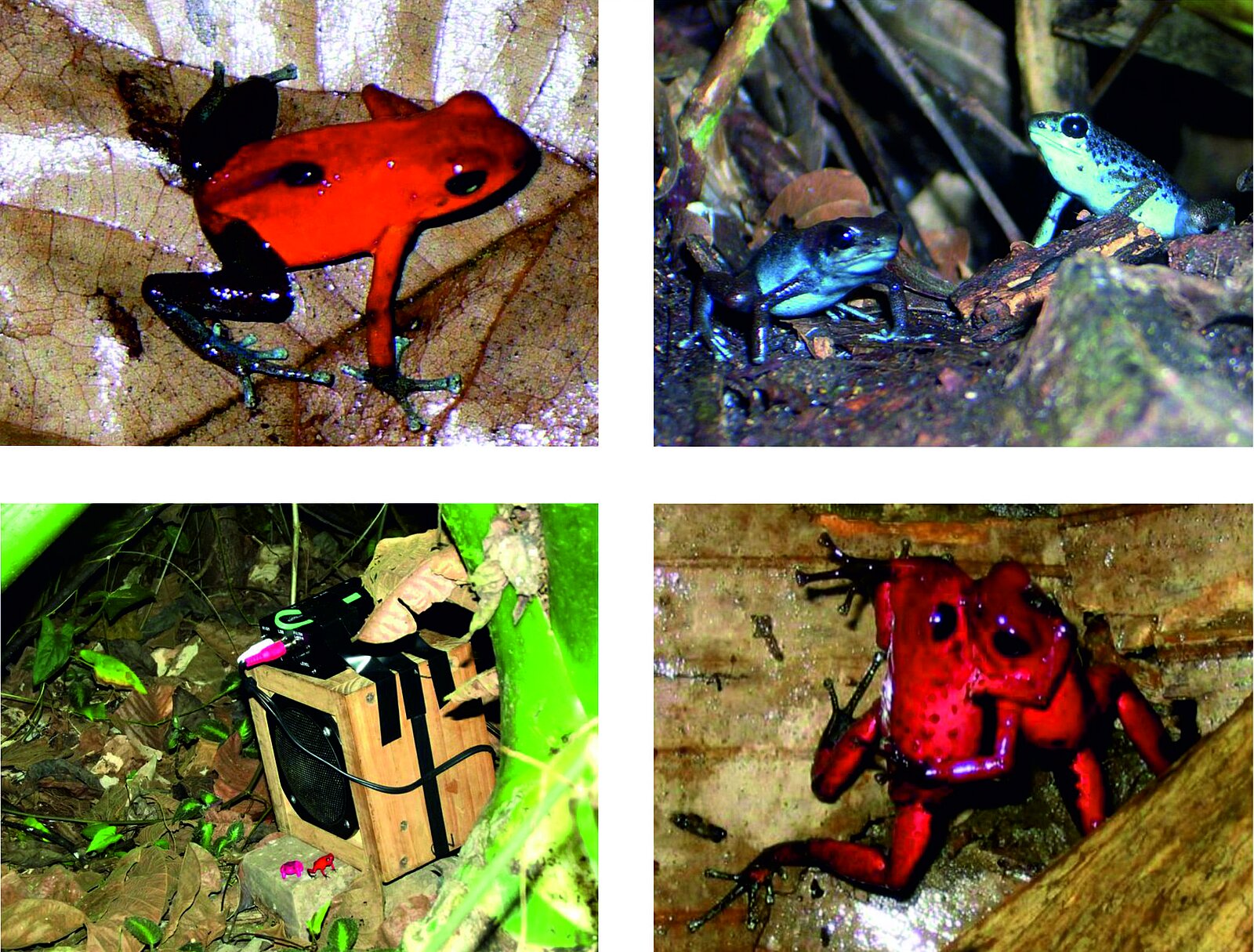Animals have developed many different adaptations to local environmental conditions to maximize their fitness, i.e. their probability of survival and reproductive success. These strategies can differ among individuals in a population, populations within species as well as between closely related species, and in the long term, contribute to divergence and speciation. Neotropical poison frogs of the family Dendrobatidae differ e.g. in color, behavior (e.g. territoriality, mate choice, personality), their ecology and their toxicity among populations. Among other things, we examine their strategies for avoiding predators. Some populations are more conspicuously colored and more toxic (aposematic), while others are cryptically colored and non-toxic. These morphological properties correlate with differences in behavior, differences on the molecular and physiological level and together establish the concept of the "aposematic phenotype". Which ecological factors led to these divergences is still unknown and this question will be integrated into future research projects.
Other groups of amphibians are aposematic and cryptic at the same time. Yellow-bellied toads, for example, are dorsally cryptic, but have a highly contrasting yellow-black belly as well as skin glands filled with toxins. Variations between populations are less pronounced, but toads can maximize their dorsal crypsis on different substrates by plastically changing their coloration. However, these animals suffer from severe population declines due to habitat loss and fragmentation. Research into molecular as well as ecological differences and their adaptations to different habitats should help to protect this endangered species in the long term.
The interaction of long-term adaptations (molecular fixation) and plastic reactions to different environmental conditions is difficult to disentangle. These interactions form the basis for evolutionary changes and must be better understood; also with regard to the ability of animals to adapt to changing environmental conditions.

Geno- and Phenotypes of aposematic poison frogs

Ecology, species conservation and population genetics of amphibia and tree frogs

Behavioural ecology and personality of poison frog

Methods to employ
Verhalten:
- Verhaltensbeobachtungen im Freiland
- Videoüberwachung von Verhalten im Labor
- Bioakustische Aufnahmen, Auswertungen und Playbackexperimente
- Partnerwahlexperimente
Ökologie:
- Spektrometrische Vermessung von Substraten und Tieren
- Farbanalysen und Visuelle Modellierung
- Mark-Recapture Studien
- Prädationsexperimente
Populationsgenetik:
- PCR, Genotyping
- Populationsgenetische Auswertungen mit Mikrosatelliten und SNPs
-
Phylogenetische Analysen basierend auf Gensequenzen
Molekulargenetik:
- NGS: Differentielle Genexpression (RNASeq)
- Real-time RT PCR
The Team
Head: apl. Prof. Dr. rer. nat. Heike Pröhl
Dr. rer. nat Ariel Rodriguez
PhD
Anaisa Cajigas Gandia
Vasiliki Mantzana Oikonomaki
Mats Wiborg
Victoria Wethmar
Lars Dietze
Master students
Maline Türk
Bachelor students
Lajana Freitag
Lisa Wiese
Leonie Lötzer
Alumni
Luca Kehrt
Juliane Monteiro (extern)
Ivonne Menche
Astrid Krug
Corinna Dreher
Oscar Brusa
Jasmin Kleißen
Ricardo Cossio
Dr. rer. nat. Beate Röll
Publications
read more
read more
read more
read more
read more
read more
read more
read more
read more
read more


